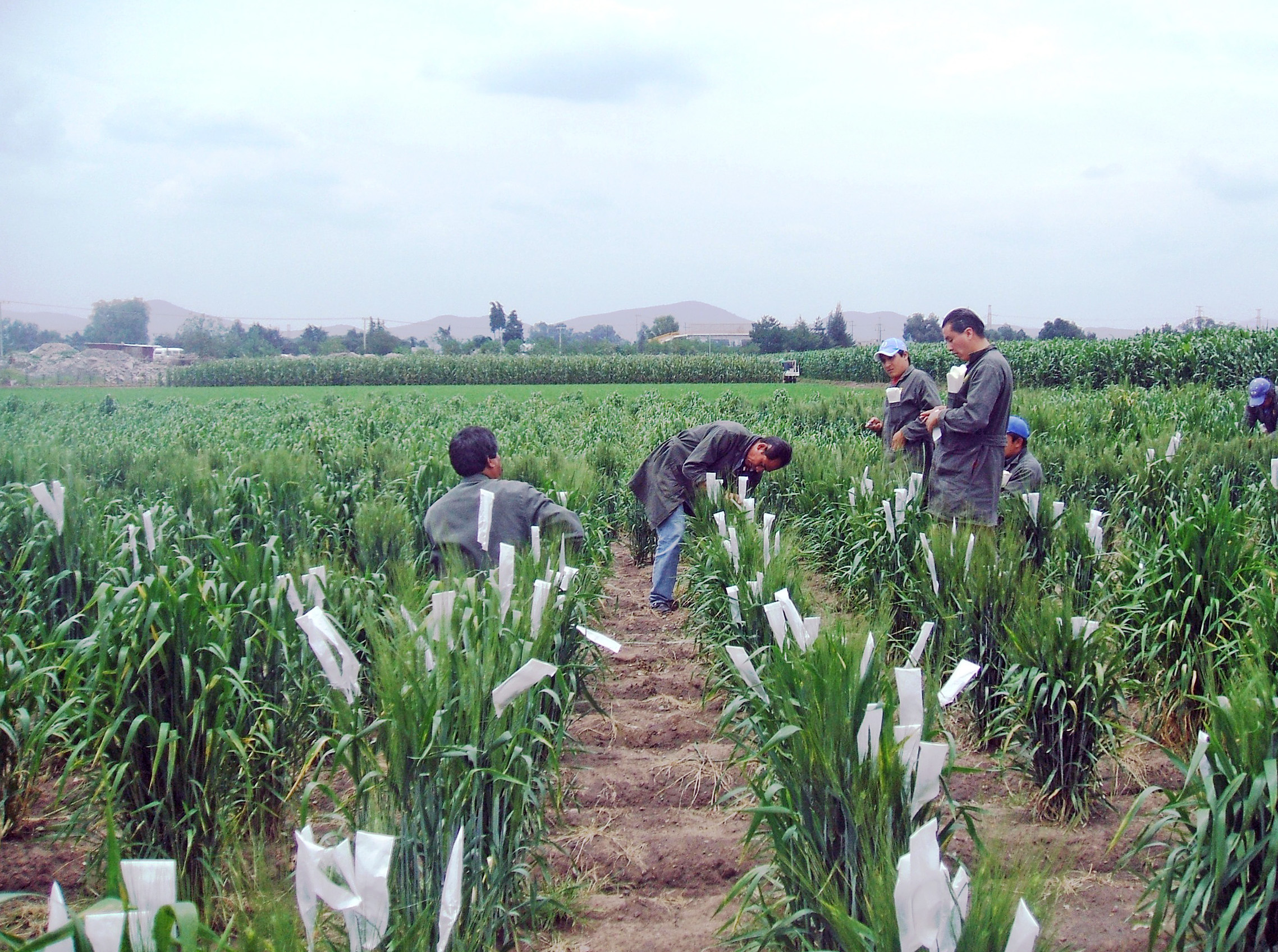EL BATAN, Mexico (CIMMYT) – A new paper proposes researchers analyze environmental impacts through “envirotyping,” a new typing method which allows scientists to dissect complex environmental interactions to pinpoint climate change effects on crops. When used with genotyping and phenotyping – typing methods that assess the genetic and in-field performance of crops – researchers can more effectively adapt crops to future climates.
Climate change has significantly shifted weather patterns, which affects a number of farming conditions such as less reliable weather, extreme temperatures and declining soil and water quality. These extreme conditions bring a number of unexpected stresses to plants such as drought and new pests.
How a crop performs is largely dependent on the environment where it grows, making it crucial for breeders to analyze crops in growing areas. However, many breeding tools such as genetic mapping are based on the environment where phenotyping is performed, and phenotyping is often conducted under managed environmental conditions.
Envirotyping allows researchers to apply real-world conditions when assessing the performance of crops. It has a wide range of applications including the development of a four-dimensional profile for crop science, which would include a genotype, phenotype, envirotype and time.
Currently, envirotyping requires environmental factors to be collected over the course of multiple trials for use in contributing to crop modeling and phenotypic predictions. Widespread acceptance of this new typing method could help establish high-precision envirotyping, as well as create highly efficient precision breeding and sustainable crop production systems based on deciphered environmental impacts.
Read the full study “Envirotyping for deciphering environmental impacts on crop plants.” and check out other recent publications from CIMMYT staff below.
- Effects of nitrogen fertilizer and manure application on storage of carbon and nitrogen under continuous maize cropping in Arenosols and Luvisols of Zimbabwe. Mujuru, L., Rusinamhodzi, L., Nyamangara, J., Hoosbeek, M.R. In: Journal of Agricultural Science, v. 154, p. 242-257.
- Empirical evaluation of sustainability of divergent farms in the dryland farming systems of India. Amare Haileslassie, Craufurd, P., Thiagarajah, R., Shalander Kumar, Whitbread, A., Rathor, A., Blummel, M., Ericsson, P., Krishna Reddy Kakumanu In: Ecological indicators, v. 60, p. 710-723.
- Evaluation of tillage and crop establishment methods integrated with relay seeding of wheat and mungbean for sustainable intensification of cotton-wheat system in South Asia. Choudhary, R., Singh, P., Sidhu, H.S., Nandal, D.P., Jat, H.S., Singh, Y., Jat, M.L. In: Field Crops Research, v. 199, p. 31-41.
- Fertilizers, hybrids, and the sustainable intensification of maize systems in the rainfed mid-hills of Nepal. Devkota, K.P., McDonald, A., Khadka, L., Khadka, A., Paudel, G., Devkota, M. In: European Journal of Agronomy, v. 80, p. 154-167.
- Detection and validation of genomic regions associated with resistance to rust diseases in a worldwide hexaploid wheat landrace collection using BayesR and mixed linear model approaches. Pasam, R.K., Bansal, U., Daetwyler, H.D., Forrest, K.L., Wong, D., Petkowski, J., Willey, N., Randhawa, M.S., Chhetri, M., Miah, H., Tibbits, J., Bariana, H.S., Hayden, M. In: Theoretical and Applied Genetics, v. 130, no. 4, p. 777-793.
- Diallel analysis of acid soil tolerant and susceptible maize inbred lines for grain yield under acid and non-acid soil conditions. Mutimaamba, C., MacRobert, J.F., Cairns, J.E., Magorokosho, C., Thokozile Ndhlela, Mukungurutse, C., Minnaar-Ontong, A., Labuschagne, M. In: Euphytica, v. 213, no. 88, p.1-10.
- Direct Nitrous Oxide emissions from Tropical And Sub-Tropical Agricultural Systems: a review and modelling of emission factors. Albanito, F., Lebender, U., Cornulier, T., Sapkota, T.B., Brentrup, F., Stirling, C., Hillier, J. In: Nature Scientific reports, v. 7, no. 44235.
- Dissection of a major QTL qhir1 conferring maternal haploidinduction ability in maize. Nair, S.K., Molenaar, W., Melchinger, A.E., Prasanna, B.M., Martinez, L., Lopez, L.A., Chaikam, V. In: Theoretical and Applied Genetics, v. 130, p. 1113-1122.
- Effect of the few-branched-1 (Fbr1) tassel mutation on performance of maize inbred lines and hybrids evaluated under stress and optimum environments. Shorai Dari, MacRobert, J.F., Minnaar-Ontong, A., Labuschagne, M. In: Maydica, vol. 62, p. 1-10.
 Nutrition, health and food security
Nutrition, health and food security 
